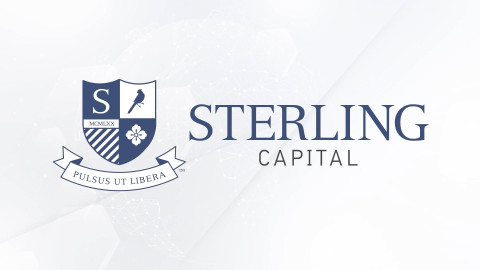Overview
I
Shares
OVEIX
Inception
Date
08.01.1996
Investment
Min.
$1,000,000
Subsequent
Investment Min.1
N/A
Max. Up Front
Sales Charge
N/A
Max. Deferred
Sales Charge
N/A
1If subsequent investments are made as part of an AIP, the minimum is $25.
Philosophy & Process
The Fund purchases companies that the portfolio manager believe are priced significantly below their intrinsic worth as well as those that demonstrate sustainable competitive advantage and high returns on invested capital. The portfolio management team partners with shareholder-oriented company management that has demonstrated a track record of strong capital allocation.
The management process identifies investment opportunities from the broad equity universe using fundamental analysis, valuation and risk management to select 30 to 50 holdings within the fund. The strategy is oriented toward long-term investing but the manager will sell a holding that has become less attractive or underperforms expectations or has excessive leverage.
Investment Considerations
The fund may invest in undervalued securities which may not appreciate in value as anticipated or remain undervalued for longer than anticipated. Investments made in small to mid-capitalization companies are subject to greater risks than large company stocks due to limited resources and inventory as well as more sensitivity to adverse conditions. The fund may invest in foreign securities which may be more volatile and less liquid due to currency fluctuation, political instability, social and economic risks.
| Term | Class A Shares | Class C Shares | Class I Shares | Class R6 Shares |
|---|---|---|---|---|
| Ticker | OVEAX | OVECX | OVEIX | STRMX |
| Inception Date | 08.01.1996 | 07.25.2001 | 08.01.1996 | 02.01.2018 |
| Investment Min. | $1,000 | $1,000 | $1,000,000 | N/A |
| Subsequent Investment Min.2 | N/A | N/A | N/A | N/A |
| Max. Up Front Sales Charge | 5.75% | N/A | N/A | N/A |
| Max. Deferred Sales Charge | N/A | 1% | N/A | N/A |
2If subsequent investments are made as part of an AIP, the minimum is $25.
Performance
| Term | QTR | YTD | 1 Year | 3 Years | 5 Years | 10 Years | Since Inception |
|---|---|---|---|---|---|---|---|
| A Shares with 5.75% Sales Charge | -11.48% | -5.52% | 1.61% | -1.67% | 5.88% | 5.45% | 8.56% |
| A Shares without Sales Charge | -6.06% | 0.27% | 7.84% | 0.28% | 7.14% | 6.08% | 8.79% |
| Institutional Shares | -6.03% | 0.39% | 8.15% | 0.53% | 7.40% | 6.35% | 9.05% |
| Lipper Mid-Cap Value Median | -3.55% | 3.44% | 10.49% | 5.22% | 8.45% | 7.13% | N/A |
The total expense ratios for Class A, C and I Shares are 1.18%, 1.93% and 0.93%, respectively. The gross expense ratio for Class R6 Shares is 0.93%. The net expense ratio for Class R6 Shares is 0.84%.
The Fund Administrator, Sterling Capital Management LLC, has contractually agreed to waive its administrative fees, pay Fund operating expenses, and/or reimburse the Fund .09% of the Class R6 average daily net assets for the period February 1, 2021 through January 31, 2022. Performance would have been lower without limitations in effect.
Past performance does not guarantee future results. The performance data quoted represents past performance and current returns may be lower or higher. The investment return and principal value of an investment will fluctuate so that an investor's shares, when redeemed, may be worth more or less than the original cost. To obtain performance information current to the most recent month end, please visit the performance summary.
The performance of the Mid Value Fund includes the performance of the OVB Equity Income Portfolio for the period prior to its consolidation with the Mid Value Fund, which commenced operations on July 23, 2001, and reflects the deduction of fees for value-added services associated with a mutual fund, such as investment management and fund accounting fees. The performance inception date for the Fund is August 1, 1996. The inception date for Class A Shares is 08.01.1996. The inception date for Class C Shares is 07.25.2001. The inception date for Class Inst'l Shares is 08.01.1996. The inception date for Class R6 Shares is 02.01.2018. The performance of Class C Shares is based on the historical performance of Class A Shares, adjusted to reflect the 1% contingent deferred sales charge. The performance shown reflects the reinvestment of all dividend and capital gains distributions.
Characteristics
| # | Company Name | Value |
|---|---|---|
| 1 | Globe Life, Inc. | 4.55% |
| 2 | Euronet Worldwide, Inc. | 3.73% |
| 3 | Nisource, Inc. | 3.49% |
| 4 | Humana, Inc. | 3.40% |
| 5 | SLM Corp. | 3.30% |
| 6 | Corteva, Inc. | 3.27% |
| 7 | Radian Group, Inc. | 3.23% |
| 8 | Air Lease Corp. | 3.18% |
| 9 | Target Corp. | 2.97% |
| 10 | Take-Two Interactive Software, Inc. | 2.89% |
Current and future portfolio holdings are subject to change and risk. Based on Market Value of securities.
Sector Allocation as of 06.30.2024
Allocations are based on the current weight to funds in the cited Sector. The composition of the fund's holdings is subject to change.
Growth of $10,000 as of 06.30.2024
The Growth of $10,000 is hypothetical based upon the performance of net A Shares at NAV for the period ended 06.30.2024. It includes the reinvestment of dividends and capital gains.
Statistics
| Term | Value |
|---|---|
| Alpha | -1.64 |
| Beta | 1.06 |
| R-Squared | 93.11 |
| Standard Deviation | 19.44 |
| Sharpe Ratio | 0.24 |
3The Funds composition is subject to change. Annual Turnover Ratio is 12 month rolling calculation. Alpha, Beta, R-Squared, Standard Deviation, and Sharpe Ratio are based on a 10-year calculation.
View a Glossary of Terms.
| Term | Value |
|---|---|
| Weighted Median P/E | 17.93 |
| Weighted Average P/B | 1.77 |
| Weighted Average Market Cap | $20.82B |
| Annual Turnover | 20% |
Mid Value Fund
Materials
Equity Funds
Insights
Contact
Learn more about Sterling Capital solutions and services.

© 2024 Morningstar. All Rights Reserved. The information contained herein: (1) is proprietary to Morningstar and/or its content providers; (2) may not be copied or distributed; and (3) is not warranted to be accurate, complete or timely. Neither Morningstar nor its content providers are responsible for any damages or losses arising from any use of this information. Past performance is no guarantee of future results.
The Morningstar Rating™ for funds, or "star rating", is calculated for managed products (including mutual funds, variable annuity and variable life subaccounts, exchange-traded funds, closed-end funds, and separate accounts) with at least a three-year history. Exchange-traded funds and open-ended mutual funds are considered a single population for comparative purposes. It is calculated based on a Morningstar Risk-Adjusted Return measure that accounts for variation in a managed product's monthly excess performance, placing more emphasis on downward variations and rewarding consistent performance. The top 10% of products in each product category receive 5 stars, the next 22.5% receive 4 stars, the next 35% receive 3 stars, the next 22.5% receive 2 stars, and the bottom 10% receive 1 star. The Overall Morningstar Rating for a managed product is derived from a weighted average of the performance figures associated with its three-, five-, and 10-year (if applicable) Morningstar Rating metrics. The weights are: 100% three-year rating for 36-59 months of total returns, 60% five-year rating/40% three-year rating for 60-119 months of total returns, and 50% 10-year rating/30% five-year rating/20% three-year rating for 120 or more months of total returns. While the 10-year overall star rating formula seems to give the most weight to the 10-year period, the most recent three-year period actually has the greatest impact because it is included in all three rating periods.








